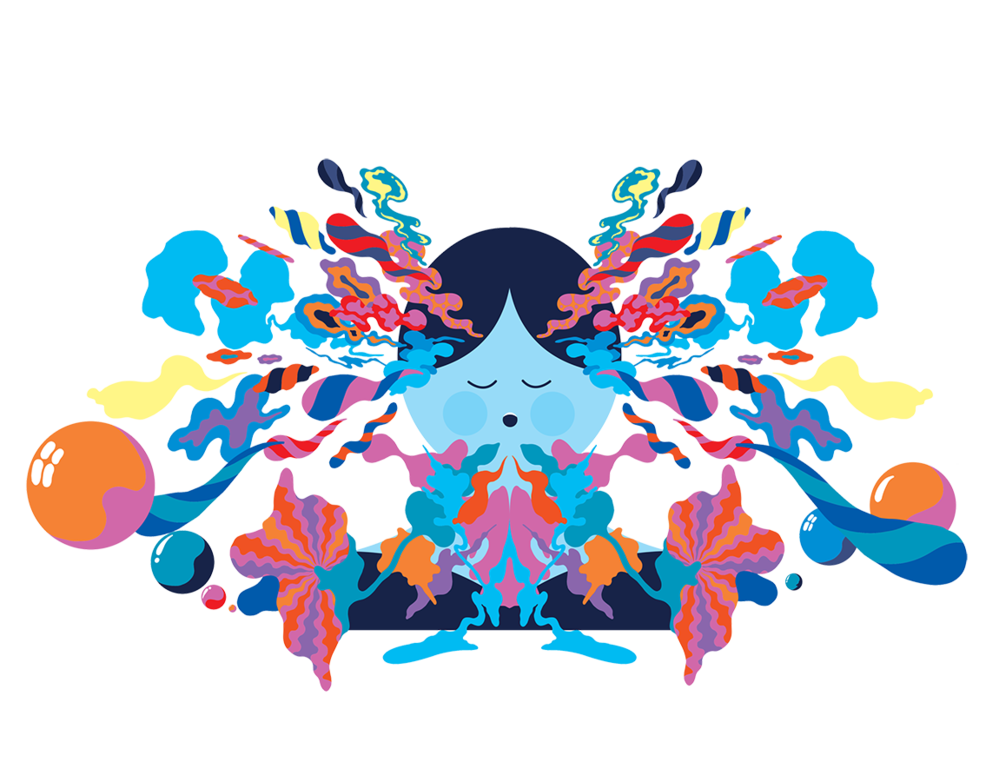Psychedelic adjuvants?
On more and more news sites, you come across reports that psychedelic drugs are being used during the treatment of mental disorders and addictions, but what are these psychedelic adjuvants?
Psychedelics are a classification of plant-based and synthetic substances known for producing an unusual state of consciousness so powerful and unique that they are most often compared to near-death experiences or states of religious ecstasy. When someone hears the term "psychedelic," it is often associated with hippies and the social movements of the 1960s, but beyond the superficial associations and stigmas lies a rich story of ancient human history, scientific discovery and medicinal treatment.
Different types of psychedelics
The group of substances that falls under the category of "psychedelics" includes both plants and synthetic drugs such as cannabis, MDMA, LSD, psilocybin mushrooms, ayahuasca, DMT and ibogaine. Some of these, such as cannabis, ibogaine and psilocybin mushrooms, occur naturally in the plant world and can be ingested or smoked to produce psychedelic effects. Others such as ayahuasca are made by combining two different plants and preparing them in a specific way that produce visionary effects. Outside the plant world are man-made compounds such as LSD and MDMA that do not occur in nature.

How do psychedelics work?
What do psychedelics actually do in our brains? With such a diverse set of sources, it's hard to see a unifying factor, but there are many similarities in how these substances interact with our brain chemistry. The active chemical in psychedelics binds to the same receptor in your brain as the neurotransmitter serotonin, which is responsible for transmitting information to different parts of the brain and is closely linked to mood, sexual desire, appetite, sleep and memory. Although there is still some mystery about exactly how they work in your brain, psychedelics have been shown to both increase and decrease neuronal activity in brain regions such as the prefrontal cortex. The prevailing hypothesis is that the effects of psychedelics result from increased brain activity, but other research suggests that compounds like psilocybin may work by regulating and restricting brain regions that act as filters. This will allow us to temporarily break through the barriers that limit us in a normal state.
Psychedelics are not new.
Psychedelics have always played a central role in numerous cultures around the world due to their ability to catalyze transformative experiences and epiphanies in those who use them. In ancient Zoroastrian and Hindu cultures, the psychedelic substance known as soma played a central role in their religion. In ancient Greece, at the dawn of Western civilization, their sacred annual ritual known as the Eleusinian Mysteries featured a concoction known as Kykeon, which many scholars believe was a psychedelic drink. Other cultures such as the ancient Egyptians and numerous indigenous tribes also used and greatly appreciated psychedelics. Many of these indigenous tribes are still around today and use psychedelics as a key component in their religion and spirituality.
Why we can use psychedelics now
Today, as the restrictions and stigmas surrounding psychedelics begin to recede, there is a wide range of exciting new research and applications for these transformative substances. Organizations such as the Multidisciplinary Association for Psychedelic Studies (MAPS), the Heffter Institute and others have conducted scientific studies on the therapeutic value of psychedelics for treating conditions such as PTSD, substance abuse, end-of-life anxiety, social anxiety, obsessive compulsive disorder and depression. Psychedelics are particularly suited to treat these psychological conditions because of their ability to bring a person to an unparalleled state of openness and self-reflection that is beyond their normal everyday ego-consciousness. In this revealing state, people can see things about themselves such as chronic behaviors, past traumas, addictions and judgments that normally operate under the radar of awakening consciousness. After such a revealing experience, people are often empowered to make fundamental changes in how they live and how they see themselves and the world. Harnessing the power of this "peak experience" that psychedelics provide is the essence of what makes them so unique and effective. Psychedelic therapy often involves not only taking a psychedelic substance, but doing so with a trained "trip coach" who can help a person open up and experience his/her experience in a supportive environment. This applies not only to clinical psychedelic treatments, but also to the realm of psycho-spiritual therapy you would find in indigenous psychedelic ceremonies or places like ayahuasca retreat centers where trained shamans guide people through their experience and keep them grounded and supported . Psychedelics by themselves do not offer healing, but create a visionary experience that people can use to heal themselves. Because they are so incredibly powerful, both psychotherapists and shamans agree that they should rarely, if ever, be used alone.
The right guidance
Whether you choose MDMA therapy, LSD therapy or a truffle session with psilocybin.... It is always helpful to familiarize yourself with the subject matter. At this time of writing MDMA therapy not yet legal in the Netherlands. However, you can legally get counseling during truffle therapy or through an analogue of LSD the LSD therapy. Right now you can go to triptherapie.nl for this kind of session.
Read more at the website of Trip Therapy
